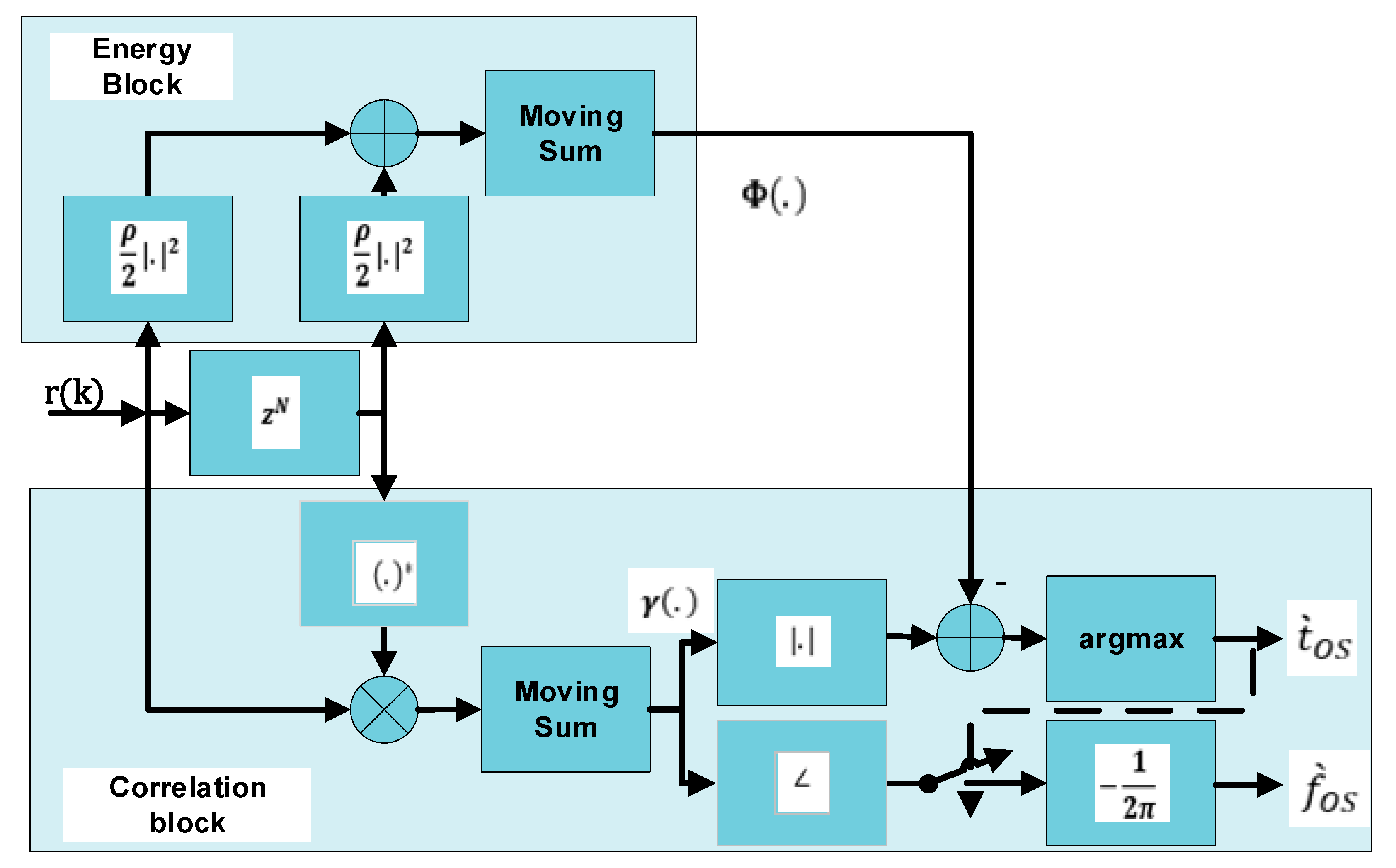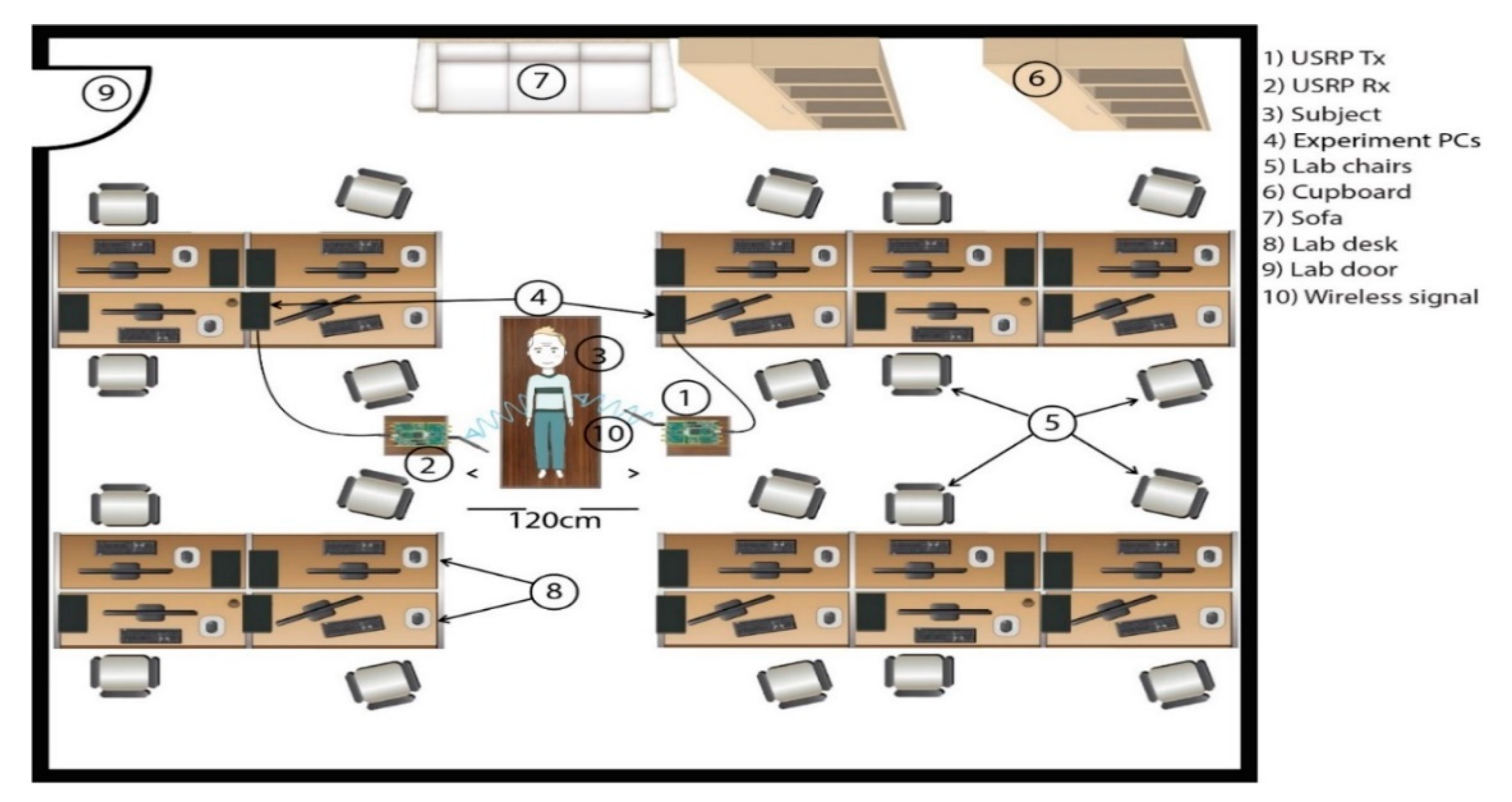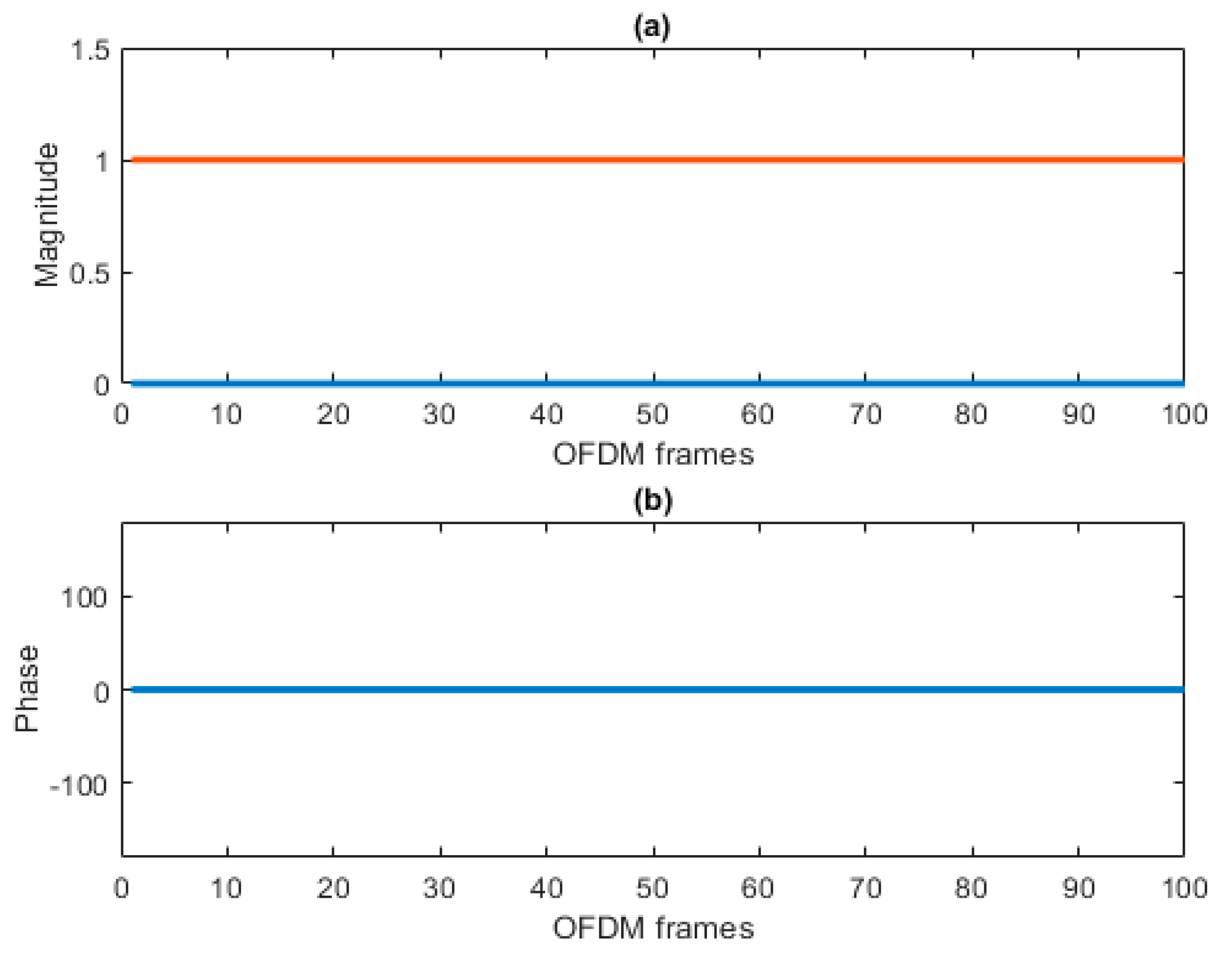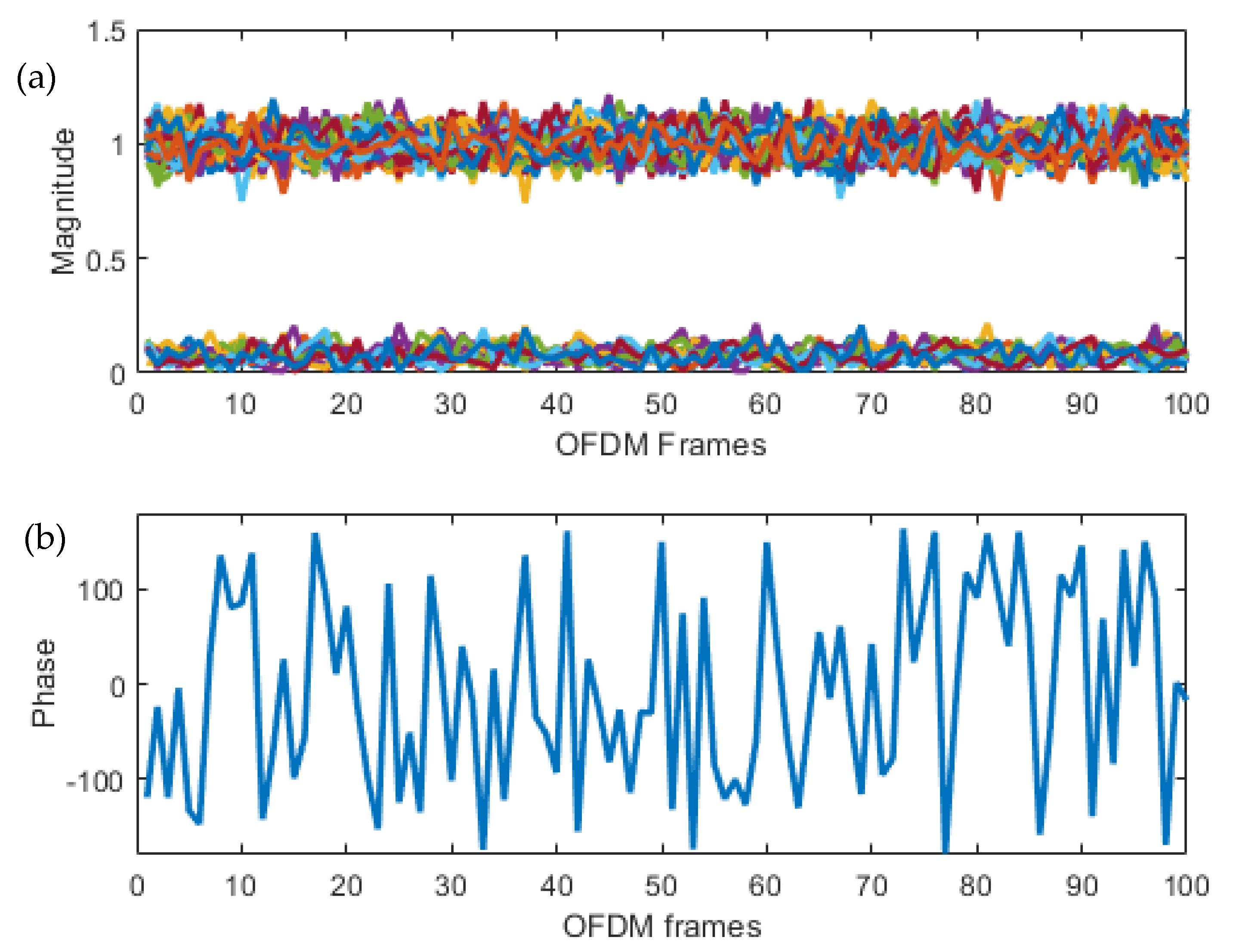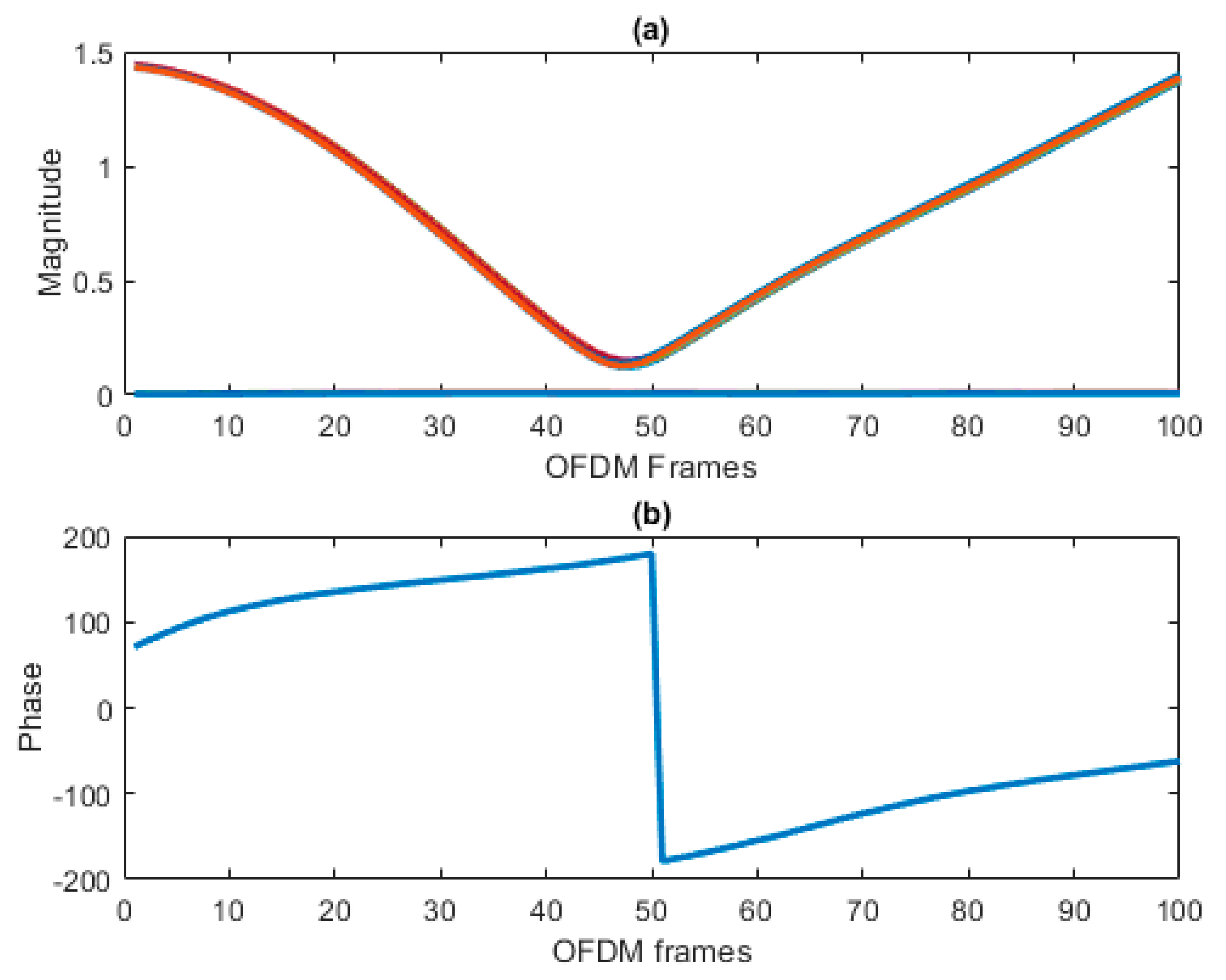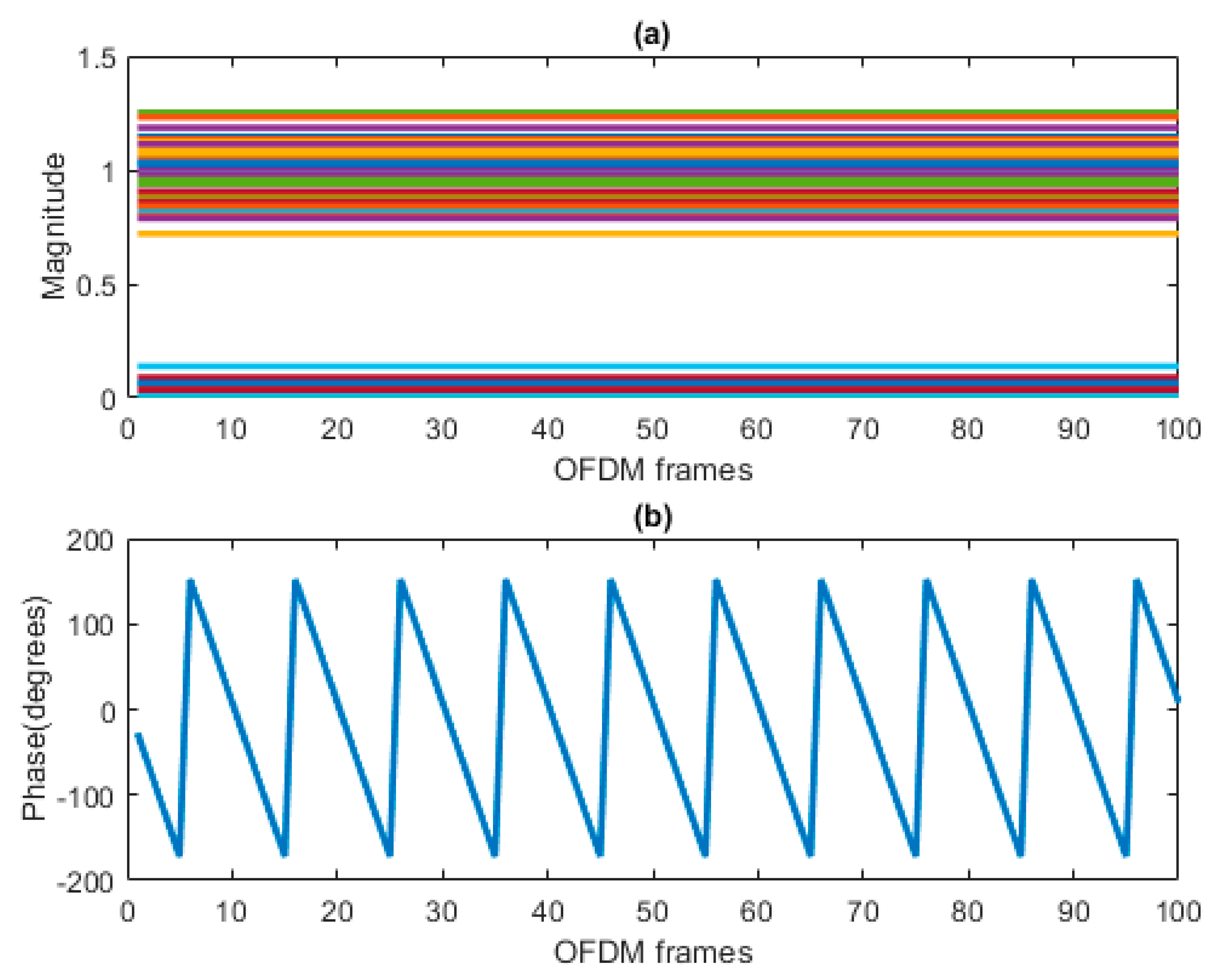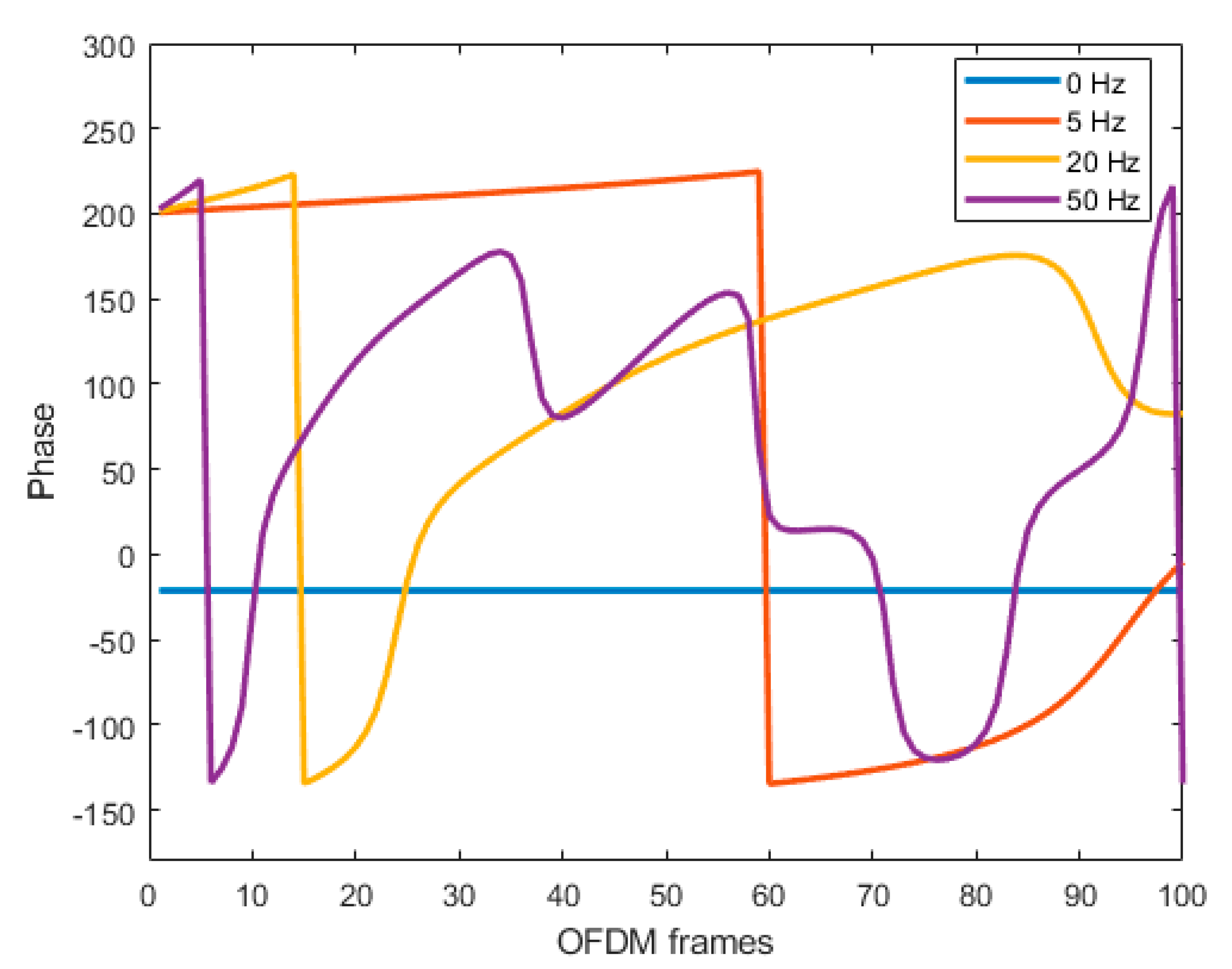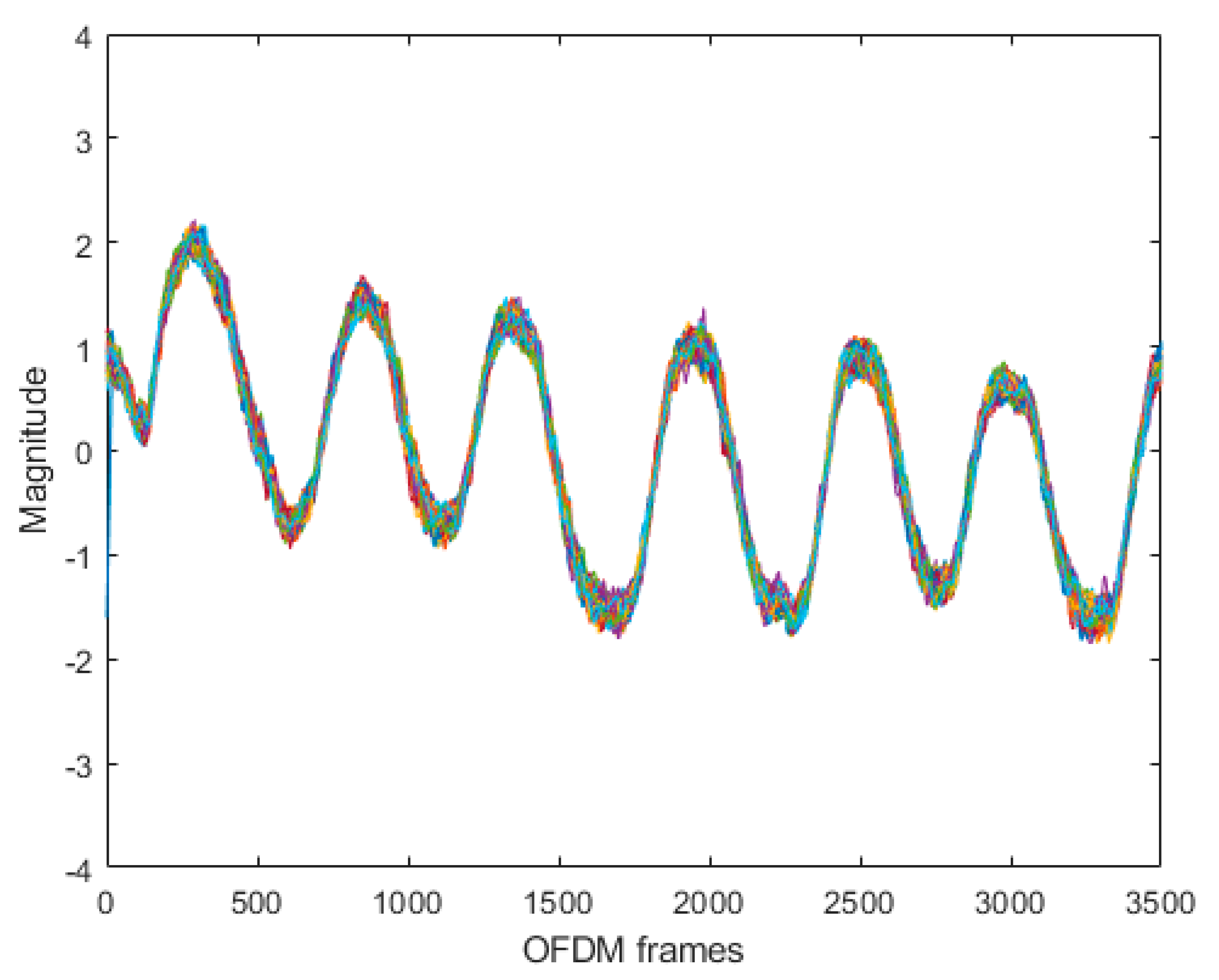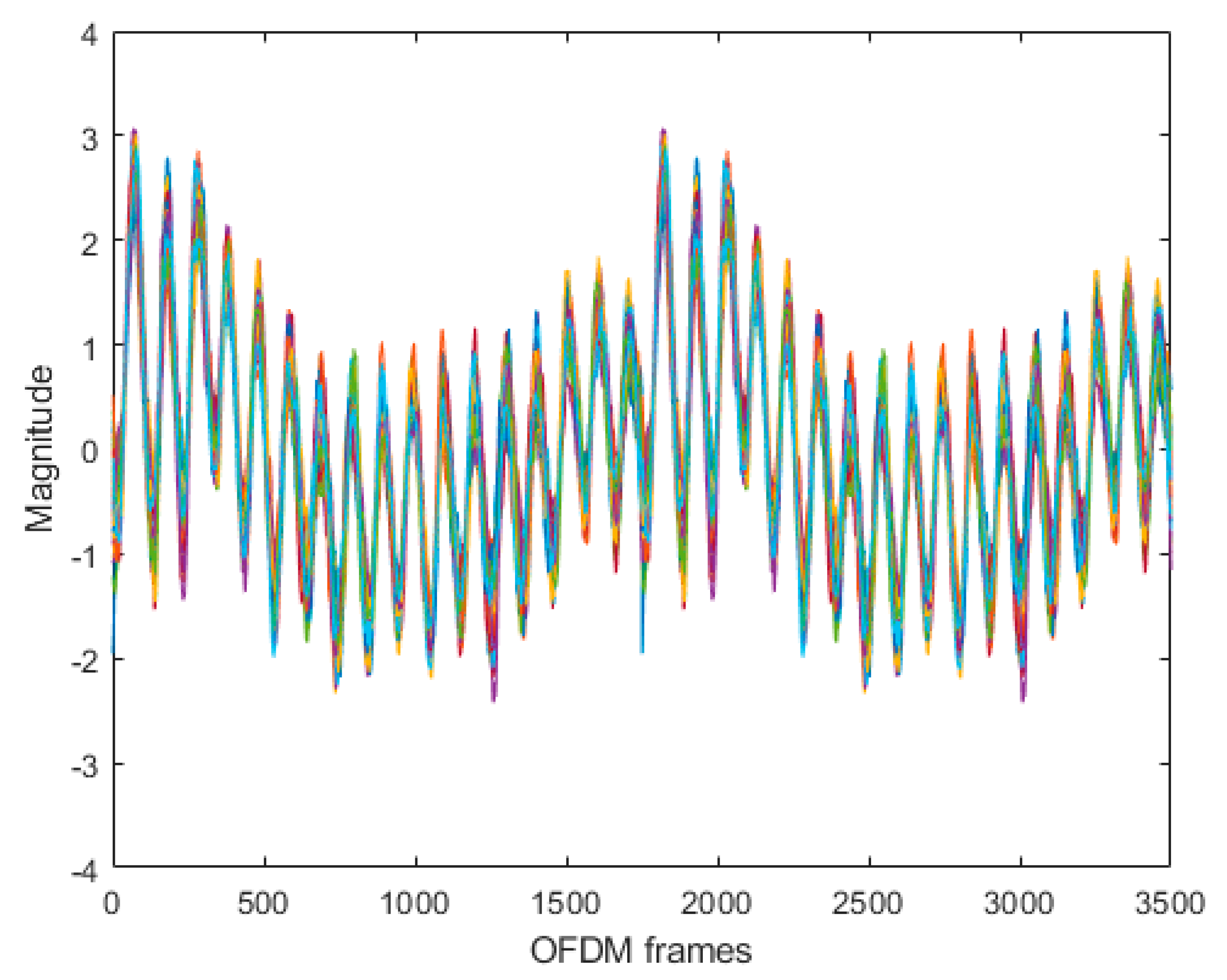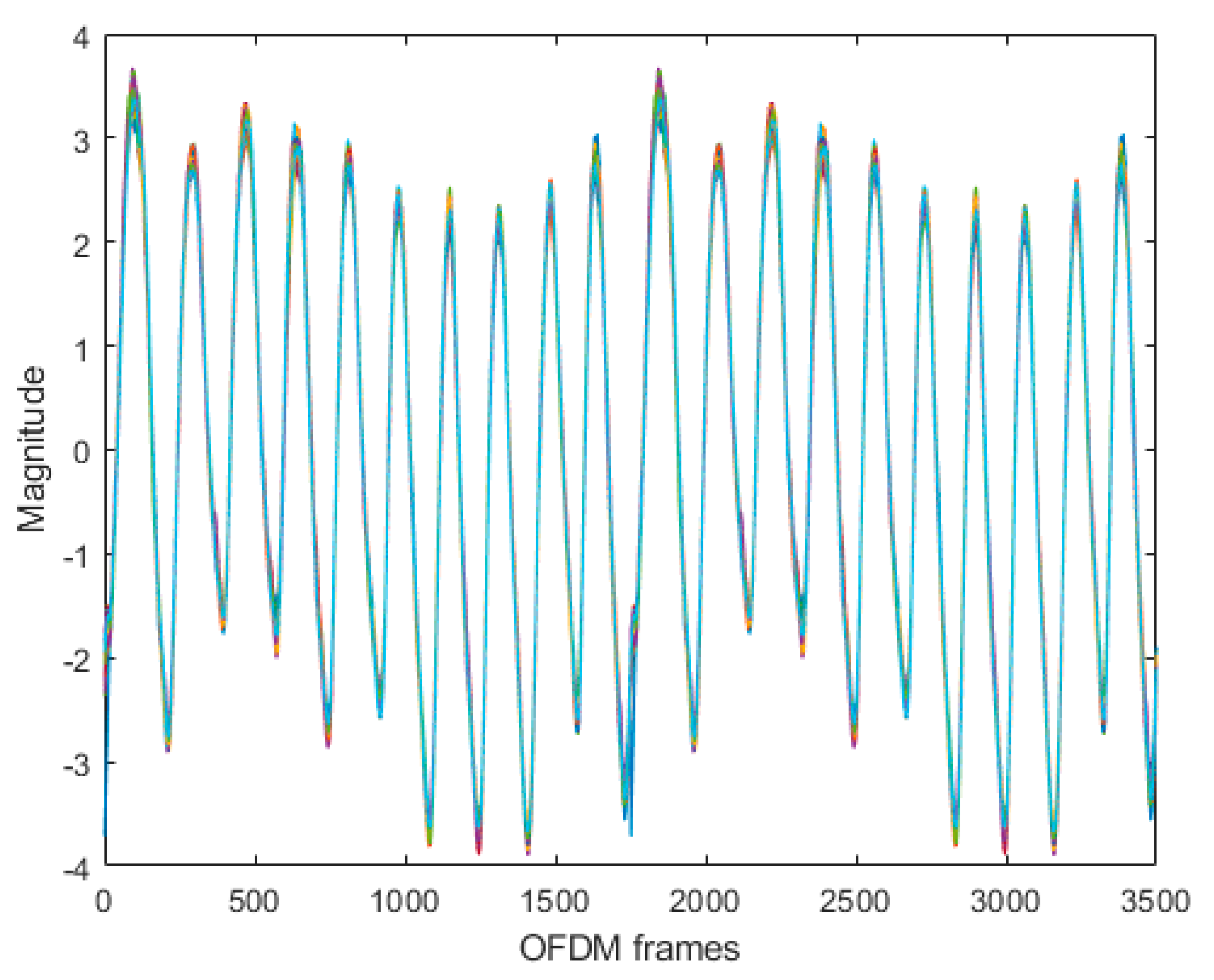3.1.1. Transmitter Software Design
In transmitter software design, the OFDM technique-based signal is generated to capture the fine-grained WCSI. Initially, the random bits
x(
n) are generated at successive sample times and possess one channel per column. Signal columns may be buffered into frames by specifying the number of samples per frame as more than 1. This input signal is modulated using the quaternary phase-shift keying (QPSK) technique presented in Equation (1):
where signal
and
are in-phase and quadrature components. Furthermore, the modulated signals are converted into smaller parallel streams of subcarriers. The nulls and DC subcarriers are added to concatenate the signals of the same data type in order to create a continuous output signal. The subcarrier
k = 0 is not used since its magnitude and phase would be influenced by the carrier frequency
and subcarrier nulls are used for canceling inter-carrier interference (ICI) without the need for guard bands or expensive band-pass filters. Computing the inverse fast Fourier transform (IFFT) of the contiguous signal for transforming complex frequency domain signals into the time domain signal involves orthogonality between the subcarriers. The total number of subcarriers used is N-FFT points, including the DC and null subcarriers, and
contains the QPSK modulated complex data. The complex data signal is transformed into the time domain by using Equation (2):
where
, the cyclic prefix (CP) in the time domain is inserted at the start of the frame by replicating the last one-fourth samples, rendering the frame
. The CP addition in the OFDM frame is used for avoiding inter-symbol interference (ISI). The complete OFDM frame, including the CP, can be written mathematically as provided in Equation (3).
The flexible gain is added to enhance the transmitted signal strength. The software-defined flexible USRP hardware configuration is also a function of the transmitter PC. This function is used to control RF processing, such as operating carrier frequency, master clock, interpolation, system gain, etc.
3.1.5. Receiver Software Design
In the receiver software design, the wireless channel impairments and their effect on CFR are firstly analyzed by simulations for design problems. Simulation results help in removing the time and frequency offset. We introduced the Van-De-Beek algorithm in the receiver design to reduce time-delays and transmitter-receiver oscillator mismatch. This helps in the synchronization of OFDM frames and the correct removal of CP. In analyzing the channel impairment effects on CFR for designing a receiver, we considered the ideal, AWGN, fading, and dispersive channels. In the ideal channel, the transmitted OFDM frame,
is received exactly at the receiver without any channel impairment at the simulated channel, i.e.,
. The received signal
is provided in Equation (4) as the following.
The CFR for ideal channel
is directly measured by taking the Fourier transform of
as shown in Equation (5).
In the AWGN channel, the additive noise
is added at the simulated channel to the transmitted OFDM frame
. The received signal
is provided in Equation (6) as the following.
The CFR for the AWGN channel
is directly measured by taking Fourier transform of
as shown in Equation (7).
In the fading channel, the Doppler shift
is added at the simulated channel to the transmitted OFDM frame
. The received signal
is provided in Equation (8).
The CFR for the fading channel
in the presence of the Doppler shift is directly measured by taking the Fourier transform of
, as shown in Equation (9).
In the dispersive channel, the time and frequency offset are added at the simulated to the transmitted OFDM frame
. The received signal
is provided in Equation (10).
The CFR for dispersive channel
is directly measured by taking the Fourier transform of
, as shown in Equation (11).
In all the simulated channels, frame synchronization is not applied to analyze the CFR and CP is directly removed. While in the real-time software design of the receiver, CP is removed after the synchronization. The software-defined flexible USRP hardware configuration block is used to modify and control hardware parameters, such as carrier operating frequency, system gain, decimation, master clock rate, etc. The received signal,
, possesses the WCSI which includes channel noise, reflection from human body motion, and carrier frequency and time offset, etc. The offset in carrier frequency between the transmitter and receiver oscillator mismatch destroys the orthogonality among the subcarriers and introduces ICI. Therefore, compensation and estimation of carrier frequency offset (CFO) are required at the receiver. The CFO compensation can be performed either in the time domain before the FFT or by directly adjusting the carrier frequency oscillator. Mathematically, the CFO is used as a multiplication of each
sample by
, where
is the normalized CFO and
N is the number of subcarriers. The received samples can now be modelled as shown in Equation (12):
where
is the channel response,
θ is the unknown timing offset,
is an unknown frequency offset, and
is additive noise. Van de Beek algorithm is used to estimate and compensate the time-frequency offset [
24]. This algorithm is also used for frame synchronization to eliminate the CP correctly.
Figure 3 shows the workings of the algorithm. This algorithm finds estimates of time offset
and frequency offset
by using Equations (13) and (14), respectively:
where
provided in Equation (13) is used to estimates time offset
and frequency offset
The magnitude of
is compensated by energy term
and peaks at time instant which provides
, while its phase at this time instant is proportional to
. The
is the correlation between two pairs of
samples of OFDM frame that are
samples apart.
is the energy part and
is the magnitude of the correlation coefficient provided in Equations (15)–(17), respectively.
The time and frequency offset are removed along with CP from each OFDM frame. Each OFDM frame will have N-points after CP removal. The FFT is then used to convert the time domain OFDM samples to the frequency domain OFDM samples. The expression for transforming time domain data into frequency domain data to measure CFR is provided in Equation (18).
Since
is the complex CFR value, it can be converted into magnitude and phase response provided in Equations (19) and (20), respectively.
The
and
are the real and imaginary parts of the CFR.
The magnitude and phase response of the multiple OFDM frames is expressed in the Equations (21) and (22).
is used for the total number of subcarriers and
is used for the total number of OFDM frames received.
The CFR presented in the magnitude and phase in Equations (21) and (22) is used for data preprocessing and classification.


